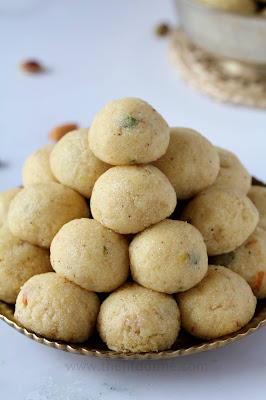With the advent of the Ganesh Chaturthi festival, the ten-day pomp and splendor would fill the air with positive energy that is unbeatable. There is something about this festival that gives an untold power to go through the entire 10 days with a lot of zest and energy.
Legend has it that Lord Ganesha was created by Goddess Parvati out of dough. It is said she asked Him to keep a watch while she had a bath. Legend goes on to say how Lord Shiva came and Lord Ganesha did not allow Him to enter. This infuriated Lord Shiva who cut of Lord Ganesha's head. Goddess Parvati was inconsolable so Lord Shiva asked to bring the head of the first living being. Lord Shiva's attendants saw an elephant and brought its head. Lord Shiva fixed this head on the human body and thus Lord Ganesha was born. This day is celebrated as Ganesh Chaturthi.
Amongst the Indian states Maharashtra is a prominent state celebrating this occasion with splendour and pomp. Maharashtra sees families booking idols a month before the festivities begin. Mandals are erected a week before the festival begins. People put garlands of marigold flowers and mango leaves, or toran outside their houses on the Chaturthi day. The entrance of the house is decorated with a beautiful rangoli (see pic above). These are handcrafted and made into various designs and colors. An aarti and puja (See pic below) is performed twice a day and there is a prasad offered everyday to the Lord. Various delicacies are made Modak being the favorite of all.
Makes 20 medium-sized laddoos
Ingredients:
1 cup semolina or rava,
3/4th cup ghee,
1/4 th cup freshly grated coconut,
1 cup sugar,
1/2 cup water,
1 pinch of cardamom powder,
4-5 chopped pistachios, almonds, cashews,
Method:
- Heat ghee in a pan and wait for it to melt.
- Add the cashews and fry them till they are slightly brown on medium heat. If you love dry fruits, you can add chopped almonds as well. Keep the fried dry fruits aside.
- Add the rava to the kadhai and start stirring continuously on low heat. The rava would be full of crumbs at this point and needs to be roasted till it gets a beautiful golden in colour.
- You can add the grated coconut at the end and then allow the mixture to cool.
- Next, add the sugar and water in a saucepan. Keep stirring it on low heat. Once the sugar has melted, the syrup will start looking frothy. We need the syrup to have a one string consistency. You can try it by testing the syrup between the thumb and the forefinger. Another easy way is to drop a little syrup in a bowl of water. It should not dissolve and should form a sugar lump when you touch it. The syrup would be ready in about 5 - 7 minutes.
- Add the cardamom powder to the syrup.
- Now slowly start folding in the rava mixture. Smoothen any lumps and add the cashews.
- If laddoo mixture becomes very dry, some milk will do the trick.
- Take the mixture off the heat and allow it to cool a little. If your mixture is a little runny, just let it relax under the fan for a while.
- Take a handful of this semi-hot mixture and press it between your palms to make a round laddoos.
- Store in an airtight container.
Note:
- If the rava is not roasted properly, the laddu's will be sticky.
- You can skip the coconut if you are making a big batch to last you for long. Fresh coconut decreases shelf life.
- Always use a low flame to roast, this will help retain the original color.
Did you make this recipe?
Please let me know how it turned out for you! Leave a comment below and share a picture on Instagram with the hashtag #thefitdotme








Awesome :)
ReplyDeleteGorgeous, love the rangoli.
ReplyDeleteOne of my fav laddoos, feel like having some!!
ReplyDeleteSwadesh Food Recipes
Indian Sarees Online Shopping
Wedding Sarees Online
Designer Sarees Online
Traditional Sarees Online
Cotton Sarees Online
Silk Sarees Online
Online Salwar Kameez
Wedding Salwar Kameez Online
Designer Salwar Kameez Online
Party Wear Salwar Kameez Online
Cotton Salwar Kameez Online
Silk Punjabi Suits Online
Designer Kurtis online
Online Indo Western Apparel
thank u for sharing ladoos
ReplyDeletebuy sarees online india| designer wedding sarees| best saree websites|kanchipuram silk sarees online|indian saree online store|sarees online uk
plz upload spicy recipes
ReplyDeleteSarees Online | buy sarees online | best sarees online | buy sarees online from india | silk sarees online | saree wholesale
wow nice one
ReplyDeletewedding sarees online | salwar kameez online | sarees online shopping | buy indian sarees online | saree manufacturers
wow superb festive specials
ReplyDeletecotton sarees online | salwar kameez wholesale | designer sarees online | bridal sarees | designer salwar kameez | dress materials online
wow looks so cool
ReplyDeletebuy indian sarees online | saree manufacturers | cotton sarees online | salwar kameez wholesale | designer sarees online | bridal sarees | designer salwar kameez